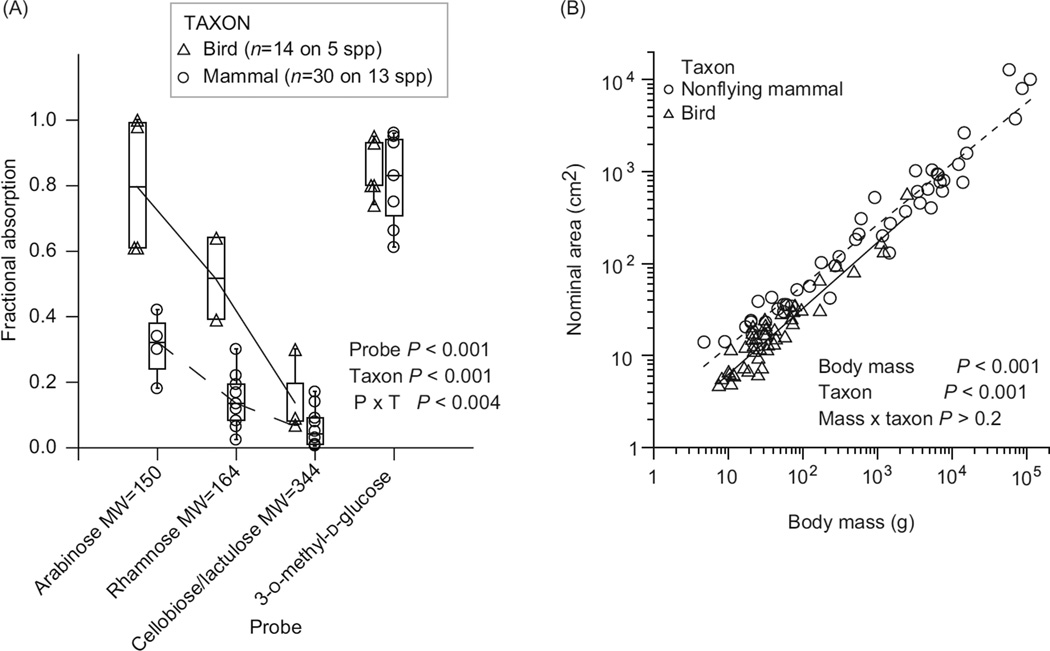Figure 13.
(A) Fractional absorption of water soluble carbohydrates by intact birds (triangles, solid line) and nonflying eutherian mammals (circles, dashed line). Arabinose, rhamnose, cellobiose, and lactulose are inert, nonactively transported compounds whereas 3-O-methyl-d-glucose is not metabolized but is transported actively as well as passively absorbed. Fractional absorption of the passively absorbed probes declined with increasing molecule size and differed significantly between the two taxa, although the difference diminished with increasing molecule size. In contrast, absorption of 3-Omethyl-d-glucose did not differ significantly between the taxa. The interpretation is that species in both groups absorb most glucose, but that birds relied more on the passive, paracellular route. Figure 4A adapted, with permission, from reference (243). (B) Small intestine nominal (smoothbore tube) surface area in omnivorous birds and mammals (same symbols and lines as in A). There was no significant difference in slope between birds and nonflying mammals (n = 46 species and 41 species in birds and mammals, respectively). When the lines were fit to the common slope of 0.73, the calculated proportionality coefficients (intercept at unity) were significantly lower for birds than for mammals. Hence, small intestine nominal surface area in birds is 36% lower than that in nonflying mammals. Figure 4B adapted from reference (75).

